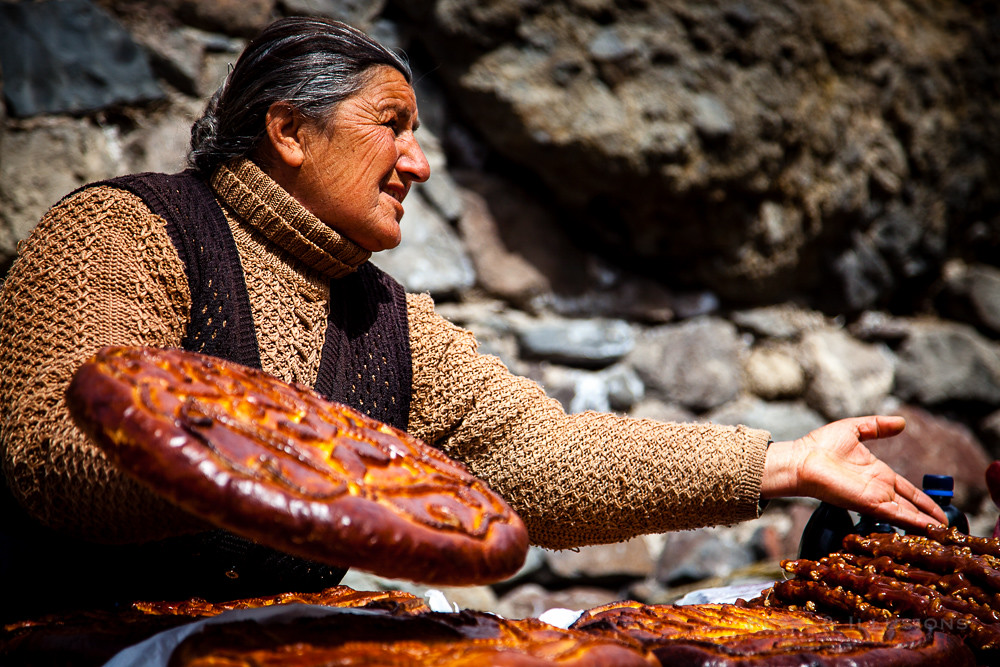Disability and Poverty in Armenia
 Armenia, a small country in the Caucasus region of Asia, is one of the oldest countries in the world. However, despite its rich history, disabled individuals continue to fight for disability rights in this historic country. Here is how some are combating the correlation between disability and poverty in Armenia.
Armenia, a small country in the Caucasus region of Asia, is one of the oldest countries in the world. However, despite its rich history, disabled individuals continue to fight for disability rights in this historic country. Here is how some are combating the correlation between disability and poverty in Armenia.
Current Reality for People With Disabilities in Armenia
Estimates from the United Nations Economic and Social Commission for Asia and the Pacific (ESCAP) and the World Health Organization (WHO) place the number of Armenians living with disabilities between 6.2% and 15%.
The following are some statistics on the living conditions of people with disabilities in Armenia:
- Roughly 92% of Armenians with disabilities are unemployed, which is in stark contrast to the non-disabled population in Armenia. The overall unemployment rate in Armenia is only 18%.
- About 69% of Armenians with disabilities report facing discrimination. The majority then try to solve the problems they face on their own instead of turning to anybody for help.
- Approximately 60% of Armenians with disabilities report that the status of public transportation is inaccessible.
- A meager 19% of Armenian teenagers with disabilities are in school. This educational disparity also starts very young, with only one-third of Armenian children with disabilities being enrolled in preschool.
- Of the thousands of children with disabilities in Armenia, 64.8% live in poverty. Within that high number, 8.4% are “extremely poor.”
An Increased Need
Between late September and early October 2023, there was a mass exodus of ethnic Armenians from the Nagorno-Karabakh region of Azerbaijan. In particular, these ethnic Armenians fled to Armenia. This has only exacerbated the need to better address the interconnectedness of disability and poverty in Armenia. Of the more than 100,000 refugees, many are “vulnerable people including pregnant women, people with disabilities and others with chronic health conditions,” according to the United Nations High Commissioner for Refugees. Additionally, Doctors Without Borders has reported that many of these new refugees experience symptoms of mental health issues. The World Health Organization includes mental health disorders, such as depression, in their definition of a disability.
Armenian Government Action
The current Constitution of Armenia, adopted in 1995, codifies the rights of Armenian citizens with disabilities to receive social security benefits from the government. For just under two decades since the passage of the current constitution, there was little to no new legislation protecting the rights of individuals with disabilities in Armenia, despite the government’s 2010 ratification of the United Nations Convention of the Rights of Persons with Disabilities. This past decade, however, has shown additional progress in improving the lives of disabled Armenians.
In 2014, the Armenian government began to specifically tackle the issue of access to education for people with disabilities. The government passed the Law on Mainstream Education, which stated that every school in Armenia accept children with disabilities by 2025. Incorporating children with disabilities into the same school system as non-disabled children is called mainstreaming, and that is exactly where the law got its name.
Then, in 2021, the Armenian government passed the Law on the Rights of Persons with Disabilities. This law officially banned discrimination on the basis of disability, ensured the right for people with disabilities to access reasonable accommodations and allowed nongovernmental organizations (NGOs) to file lawsuits on behalf of a person with a disability who has faced discrimination, but does not have the ability to represent themselves in court. The law also created more passageways for people with disabilities to live independently instead of inside institutions, and allowed disabled Armenians the right to justice and accessibility.
Finally, in 2022, Armenia signed the Marrakesh VIP Treaty. This allowed libraries to create versions of books that accommodate those with “print disabilities,” including those who are blind.
NGO Action
With all the progress the Armenian government has made toward tackling the issue of disability and poverty in Armenia being interconnected, it is important not to forget the important work of NGOs. After all, it was Armenian NGOs focused on disability rights who fought for years for legislation such as the Law on the Rights of Persons with Disabilities.
For everything the Armenian government has addressed, there have been NGOs on the ground working to address the same issues. Bridge of Hope, an NGO based out of Yerevan, Armenia, has provided accessible education to disabled Armenian children since 1996. Since the Law on Mainstream Education passed, Bridge of Hope has trained staff at 20 special education centers.
The Agate Rights Defense Center for Women With Disabilities, based out of Gyumri, Armenia, and Equal Rights, Equal Opportunities (EREO), based out of Vanadzor, Armenia, provide independent living for Armenians with disabilities. Its work combined has allowed many disabled Armenians to find meaningful employment. Countless disabled Armenians have benefitted from peer support and self-advocacy tools to better their own lives.
Looking Ahead
For those with disabilities in Armenia, there is hope. NGOs are working to combat stigmas and the lack of support numerous citizens face. The outcome of their work is destined to improve the lives of those facing disability and poverty in Armenia.
– Natalie Coyne
Photo: Flickr
